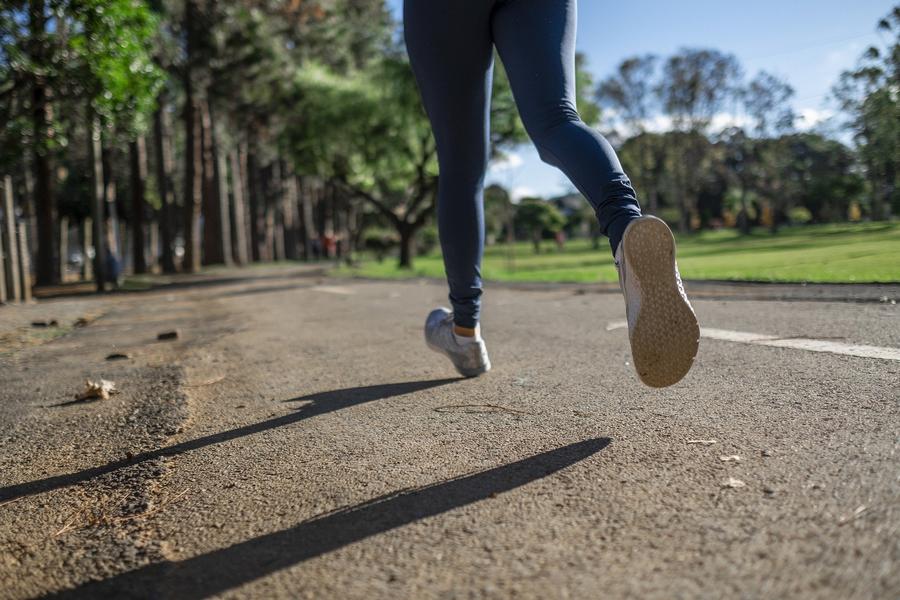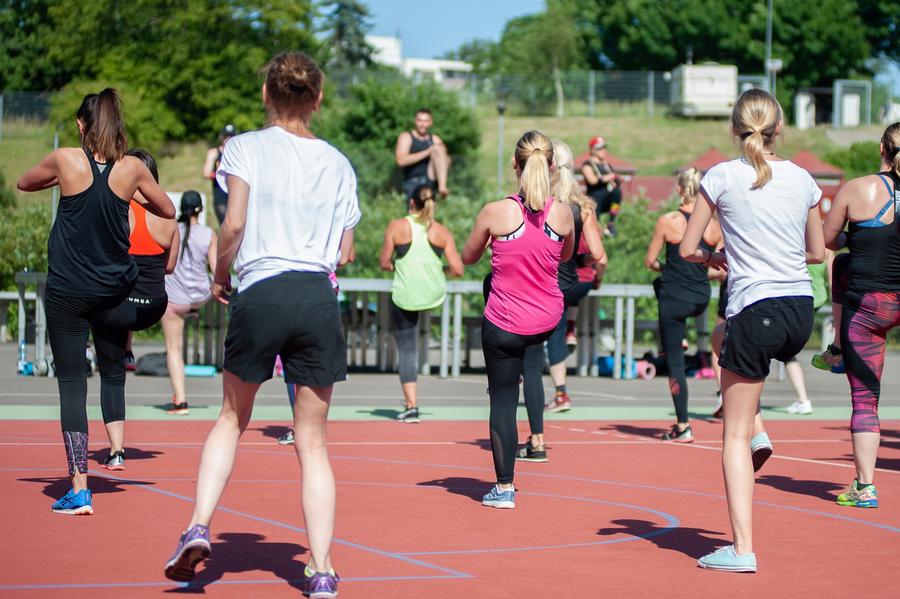The association between physical exercise, stress and the brain.
The association between physical exercise, stress and the brain
A simple way – backed by science – to reduce our level of stress
For many people, stress has emerged as a well-known phenomenon at the workplace. In most industrialized countries, life has become more and more competitive, and although on average we enjoy more free time and work less hours than our predecessors did sixty years ago (McGrattan & Rogerson, 2004), people seem to suffer the symptoms of stress more than ever. The consequences affect both the individual and their families, and has an immense negative impact on organizations, public institutions, health care centers and society in general.

Definition
The term «stress» was originally used by engineers to explain forces that can put strain on a structure (Lupien et al., 2007). Selye (1936) adopted the word to talk about a non- specific phenomenon that produced changes in the human body after experiencing different conditions, e.g. extremely cold temperatures, starving, injuries or drugs. However, as McEwen pointed out (2000), not all researchers had the same opinion and nowadays it is commonly accepted that psychological and experiential factors are among the most powerful of stressors. Broadly speaking, stress is a potential threat of our homeostasis, which means our internal stability or psychological balance. At the workplace, stress can be caused by a large number of environmental stressors, e.g. noise, temperature, inadequate furniture or illumination, or chemical toxins (Ganster and Rosen, 2013). In this article, however, I will concentrate on psychosocial stressors, i.e. events that affect workers through a psychological process and not through a physical experience. The most frequent psychosocial stressors cited by workers are unmanageable workload, unrealistic deadlines, lack of control over the job, aggressive management style, lack of support, job insecurity, fear of redundancy, and lack of work life balance (Buckley 2016, Tytherleigh et al. 2005). Nowadays, when referring to stress at the workplace, the most common symptoms cited by office workers are tiredness, headaches, forgetfulness, insomnia, irritability, and anxiety (Thorsteinsson et al., 2014).
Coping mechanisms
Research has long maintained that it is possible to cope with stress and reduce its negative impact. Cooper and Cartwright (1997) assert that stress can be reduced through primary, secondary and tertiary interventions. Primary interventions address the sources of stress that are a part of the working environment, e.g. workload or unfair employment policies. Concerning workload, the requirements of the company should be in line with the capacity and resources of the workers, while policies such as underpayment or lack of legal cover should be banned completely. Moreover, there should not be any ambiguity regarding future promotions, opportunities or other organizational changes. Secondary interventions deal with the management of existing stress, raising awareness and facilitating training. The organization can provide health promotion events, time management courses or group coaching sessions. Finally, tertiary interventions help individuals to recover from serious stress related problems through adequate treatment such as counselling or coaching (Cooper and Cartwright, 1997). In the same context, Nekoranec and Kmosena (2015) suggest that redistribution of job functions, higher awareness of managers, social support and mindfulness meditation are amongst the most effective coping mechanisms at the workplace.
Neuroscience, stress and physical exercise
According to Brann (2015), neuroscience can be described as the scientific study of the nervous system. It is an extensive field and includes the anatomy of the brain and its functioning. Neuroscience is related with a number of disciplines, such as medicine, psychology, physics, computer science or chemistry, and there are several main areas of neuroscientific work and research, such as affective neuroscience, behavioural neuroscience, cognitive neuroscience or clinical neuroscience, to name but a few.

From a neuroscientific point of view, stress can be described as follows: When our homeostasis or inner balance is under threat, our behaviour examines the potential of the stressor. If there is no memory of a similar previous experience, there will be a flow of arousal, readiness, surveillance and cognitive clarification. The interaction between the incoming sensory data and the examination is formed by the limbic system, particularly the hippocampus, the amygdala and the prefrontal cortex. At the same time, the perceived stressors prompt physiological and behavioural reactions in order to restore homeostasis: the sympathetic nervous system is activated, which in turn leads to the release of noradrenaline from the synapses and adrenaline from the medulla. From a psychological point of view, the motivation to react depends on our capacity to predict an approaching event and to control the situation. Adequate coping means to activate our stress response quickly when the need arises and to finish it conveniently afterwards (de Kloet et al. 2005).
In the last ten years, neuroscientific research has not ceased to produce new and valuable findings, due, in part, to the technical evolution of measuring instruments, e.g. functional magnetic resonance imaging (fMRI) or electroencephalography (EEG).
A study carried out by Van Praag et al. (2014) concludes that regular aerobic exercise not only has positive effects on our health, but also lowers the risk of various important diseases, including stroke, diabetes and cancer. Exercise leads to adaptive responses in the brain and the external tissues that regulate the energy supply. Moreover, physical activity increases neuroplasticity (the capacity of the brain to form new neural connections) and protects the brain from diseases and injuries. The brain intervenes in the effects of exercise on peripheral organs, e.g. regulating the heart rate or adjusting the responsiveness of insulin (a hormone produced by the pancreas that controls the level of blood sugar or glucose). On the other hand, peripheral organs respond to exercise by generating agents that reinforce neuronal energy supply and brain function, e.g. irisin, a hormone released by active muscle cells that is supposed to burn fat and prevent fat cell formation. The study also indicates that the changes in the brain produced by physical exercise foster our stress robustness, i.e. the ability to tolerate threatening perturbations. Exercise enhances stress response efficiency, which means that an individual is able to adapt their response to a stressor according to the degree of threat; if it is a mild stressor, it is not necessary to activate a major response and expend a lot of energy. This capacity to adapt not only helps to reduce energy expenditure but also prevents from other negative results of recurrent or extreme stress responses on our mind, brain and body.

Suggested exercise
The following exercise programme is therefore considered to be highly beneficial for adults who show recurrent symptoms of work related stress and who lead a sedentary lifestyle. It consists of two 60-minute sessions of fitness walking per week. Compared with other activities that require financial investment (e.g. skiing), planning (e.g. team sports), good physical conditions (e.g. tennis), or to overcome perceptual barriers (e.g. fear of injury, lack of time), walking is inexpensive (only walking shoes and comfortable clothes are required), simple, accessible, natural and easily organized. Once we have acquired a certain technique, fitness walking, i.e. walking at a slightly higher pace than normally, is a method that improves not only cardiovascular rates, muscles and overall physical health, but it also burns calories and, fundamentally, enhances our mental wellbeing (Hancock, 2012). Finally, walking does not carry any specific risk factors and individuals who are willing to explore this method are more likely to stay motivated in the long term, given the aforementioned benefits.
Conclusion
After many years of studying – both as a coach and lecturer and as a small business owner – the origin and effects of stress on human mood and behaviour, I have reached the conclusion, supported by many testimonies and surveys, that physical exercise is one of the most powerful actions to reduce the level of stress and achieve a higher level of wellbeing. And although neuroscience was still far from being discovered 2,500 years ago when the following sentence was pronounced, it seems appropriate to finish this article with the words of Hippocrates, the Greek physician: “Walking is man’s best medicine”.
©Winni Schindler

